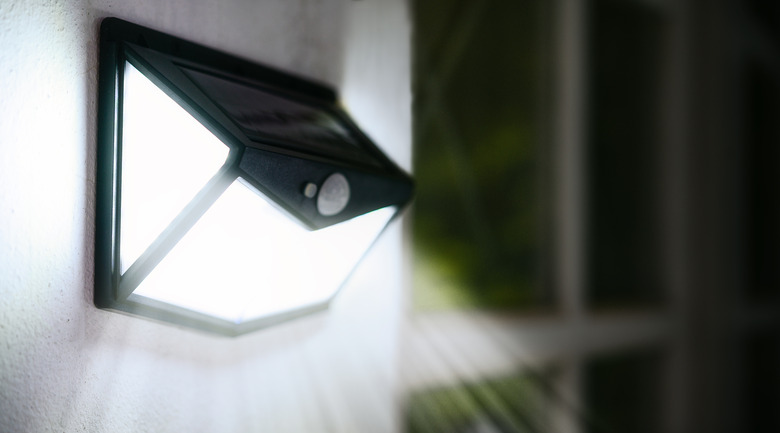Hampton Bay Motion Sensor Light Instructions
Driving up to your home, walking from the driveway to your darkened porch and fumbling to unlock the door could create an unsafe situation for you and your family — one reason exterior lighting is so important. Motion lighting turns on with movement, allowing you to see around you and avoid someone lurking in the shadows of your home. Adjust your Hampton Bay motion light to the proper sensitivity and time settings to give you a sense of security at home and enough time to avoid a bad situation.
Motion Controls on the Sensor
1. Locate the Motion Sensor Controls
Find the motion sensor controls located at the top of the Hampton Bay light on each side of the motion detector.
2. Set the Sensor
Turn the sensitivity knob, "SENS," clockwise with a slotted screwdriver to set the range of motion the light detects. Setting the sensor at the least amount of sensitivity, the light can only detect motion up to 8 feet away. Setting the sensor at the maximum sensitivity level, the light can detect motion up to 40 feet away.
3. Set the Time of Day
Adjust the "Light" control clockwise to control the time of day the light comes on. If you only want the light to come on at night, turn the knob all the way to the right with a slotted screwdriver.
4. Set the Timer
Set the "Timer" on the light for the amount of time you want the light to remain on once it detects motion. Turning the knob all the way to the left allows the light to remain on for only four seconds once it detects movement. Rotating the knob to the extreme right allows the light to remain on for 12 minutes.
5. Override the Motion Sensor
Override the motion sensor and leave the fixture on by turning your light switch off and on two times within three seconds. Once you override your motion sensor, you can turn your light switch off and on two times within three seconds to reset the light to automatic operation.
Motion Controls on the Mounting Base
1. Adjust the Dimming
Control
Find the time switch located on the bottom of the Hampton Bay motion sensor light mounting base. If your light is equipped with DualBrite dimming control, the dimming control switch is located next to the time switch. DualBrite allows your light to remain on at 50 percent power without the detection of motion for a predetermined amount of time. Once the sensor detects motion the light burns at 100 percent. For example, a 100-watt bulb burns at 50 watts until it detects motion.
2. Locate the Sensitivity Switch
Remove the Hampton Bay light from the wall to locate the sensitivity switch. Unscrew the two nuts holding the light to the wall and carefully pull it from the wall to avoid disturbing the wiring. The sensitivity switch is located on the inside of the mounting base.
3. Set the Sensitivity Level
Rotate the sensitivity switch clockwise with your thumb and forefinger to set the sensitivity level on the motion detector. Setting the switch at a higher level of sensitivity allows the light to detect minor movement. If you have trees or shrubs in the motion detector's range of detection, consider adjusting to a less sensitive setting. The wind blowing through the leaves could cause your light to come on unnecessarily. Replace the motion light on the wall.
4. Set the Timer
Set the amount of time you want your Hampton Bay motion light to remain on once it detects motion. Settings include one, five and 10 minutes. If your light is equipped with DualBrite dimming control, you can leave this feature off or set it to burn at 50 percent for three hours, six hours or from dusk to dawn.
5. Leave the Fixture On
Override the motion sensor and leave the fixture on by turning your light switch off for one second and turning it back on. Reset the motion sensor to automatic operation by repeating the steps to override the motion sensor.
